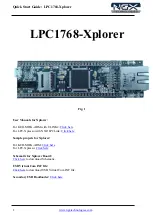31
2.4.22. STEP - Step Over
ST
ST
ST
ST
ST
Usage:
STEP
The ST command can be used to “step over” a subroutine call, rather than tracing every instruction in the subroutine.
The ST command sets a breakpoint one instruction beyond the current program counter and then executes the
target code.
The ST command can be used for BSR and JSR instructions. The ST command will work for other instructions as
well, but note that if the ST command is used with an instruction that will not return, i.e. BRA, then the temporary
breakpoint may never be encountered and thus dBUG may not regain control.
Examples:
To pass over a subroutine call, the command is:
step
2.4.23. SYMBOL - Symbol Name Management
SYMBOL
SYMBOL
SYMBOL
SYMBOL
SYMBOL
Usage:
SYMBOL <symb> <-a symb value> <-r symb> <-c|l|s>
The SYMBOL command adds or removes symbol names from the symbol table. If only a symbol name is provided
to the SYMBOL command, then the symbol table is searched for a match on the symbol name and its information
displayed.
The -a option adds a symbol name and its value into the symbol table. The -r option removes a symbol name from
the table.
The -c option clears the entire symbol table, the -l option lists the contents of the symbol table, and the -s option
displays usage information for the symbol table.
Symbol names contained in the symbol table are truncated to 31 characters. Any symbol table lookups, either by
the SYMBOL command or by the disassembler, will only use the first 31 characters. Symbol names are case
sensitive.
Examples:
To define the symbol “main” to have the value 0x30040000, the command is:
symbol
-a main 30040000
To remove the symbol “junk” from the table, the command is:
symbol
-r junk
To see how full the symbol table is, the command is:
symbol
-s
To display the symbol table, the command is:
symbol
-l
F
re
e
sc
a
le
S
e
m
ic
o
n
d
u
c
to
r,
I
Freescale Semiconductor, Inc.
For More Information On This Product,
Go to: www.freescale.com
n
c
.
..


















